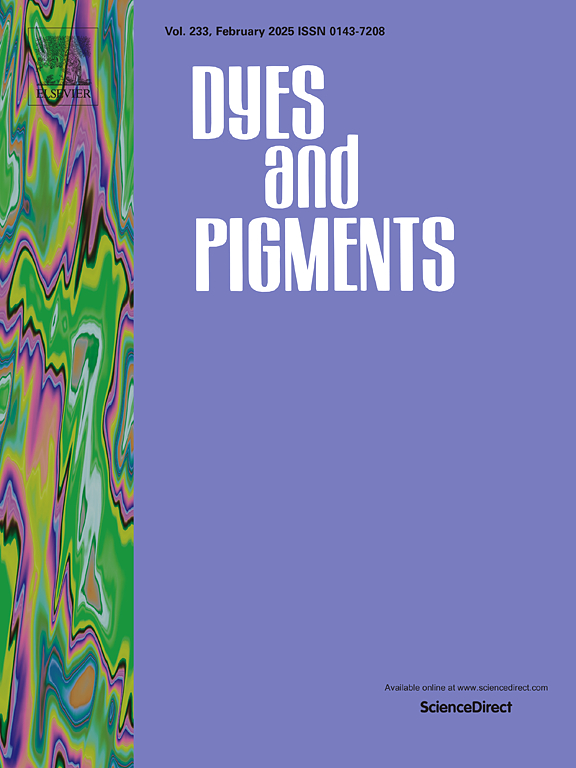Ultralong organic room temperature phosphorescence polymers enabled by chemically locking dopant internal rotation
IF 4.1
3区 工程技术
Q2 CHEMISTRY, APPLIED
引用次数: 0
Abstract
Ultralong organic room temperature phosphorescence (UORTP) polymers have attracted a growing interest in organic electronics and photonics fields. Although, amount of RTP molecules embed in polymer matrix is designed and constructed, it's still a stern challenge to explore a universal chemical/physical approach to obtain UORTP. Herein, a feasible and effective strategy is presented to achieve UORTP systems through doping three molecules, which were designed and synthesized successfully by chemical locking, into a poly (methyl methacrylate) matrix to form definite size films by thermo-plastic processing. Interestingly, three molecules with chemical locking modification that displays UORTP in a doped polymer matrix with lifetimes up to 2.33 s, 2.15 s, 2.50 s. The successful construction of these UORTP systems can be ascribed to i) effective suppression of thermal vibration nonradiation decay by chemical locking; ii) effective reduction of triplet excitons nonradiative decay rate via the formation of a more rigid microenvironment and electrostatic interaction between the PMMA matrix and three molecules. As a result, this work not only facilitate the design of UORTP materials by chemical locking design strategy, but also endow traditional polymers with fresh features for potential applications.

求助全文
约1分钟内获得全文
求助全文
来源期刊

Dyes and Pigments
工程技术-材料科学:纺织
CiteScore
8.20
自引率
13.30%
发文量
933
审稿时长
33 days
期刊介绍:
Dyes and Pigments covers the scientific and technical aspects of the chemistry and physics of dyes, pigments and their intermediates. Emphasis is placed on the properties of the colouring matters themselves rather than on their applications or the system in which they may be applied.
Thus the journal accepts research and review papers on the synthesis of dyes, pigments and intermediates, their physical or chemical properties, e.g. spectroscopic, surface, solution or solid state characteristics, the physical aspects of their preparation, e.g. precipitation, nucleation and growth, crystal formation, liquid crystalline characteristics, their photochemical, ecological or biological properties and the relationship between colour and chemical constitution. However, papers are considered which deal with the more fundamental aspects of colourant application and of the interactions of colourants with substrates or media.
The journal will interest a wide variety of workers in a range of disciplines whose work involves dyes, pigments and their intermediates, and provides a platform for investigators with common interests but diverse fields of activity such as cosmetics, reprographics, dye and pigment synthesis, medical research, polymers, etc.
 求助内容:
求助内容: 应助结果提醒方式:
应助结果提醒方式:


